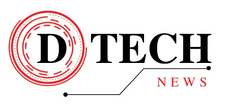## Unpacking the SideWinder APT: How the Notorious Cyber Group Wreaks Havoc in the Middle East and Africa 🌍💻
In the ever-evolving landscape of cyber threats, the Middle East and Africa have found themselves in the crosshairs of one particularly stealthy adversary—SideWinder, a notorious Advanced Persistent Threat (APT) group. This alarming development sheds light on a sophisticated digital onslaught characterized by its multi-stage attack capabilities, targeting specifically this vulnerable region.
### Understanding SideWinder APT 🕵️♂️
SideWinder has long been a feared name among cybersecurity experts, renowned for its capability to execute complex attack campaigns. Now, it has resurfaced with a vengeance, focusing its efforts on critical infrastructure and governmental sectors across the Middle East and Africa. The group’s clandestine operations emphasize the vital need for fortified cybersecurity measures across regional borders.
### Anatomy of a Multi-Stage Attack 🚀
What makes the SideWinder APT’s recent activity particularly concerning is its multi-layered approach. This strategy not only increases the likelihood of breaching defenses but also enables the group to maintain prolonged access to compromised systems. The campaign involves several stages, including:
– **Initial reconnaissance**
– **Infiltration via phishing emails or malicious links**
– **Lateral movement within networks to harvest sensitive data**
### Targets in the Middle East and Africa 🌐
The Middle East and Africa, with their burgeoning digital landscapes, offer a fertile ground for exploitation by such menacing entities. The targets typically include:
– **Public sector institutions**
– **Finance sectors**
– **Energy sectors**
These organizations’ disruption could yield significant geopolitical or financial implications, further underscoring the threat posed by SideWinder.
### The Tools of the Trade 🛠️
SideWinder is known for its vast arsenal of cyber weaponry. This includes a variety of custom malware and exploitation tools designed to evade detection. Their strategy often involves:
– **Masquerading their malicious payload as benign files**
– **Utilizing legitimate services to obfuscate their activities within normal network traffic**
### Protecting Against the APT Menace 🔐
As this ominous campaign asserts itself, cybersecurity vigilance remains paramount. Here are several essential defenses that organizations must prioritize:
– **Enhanced Email Security**: Phishing remains a favored entry vector. Advanced email screening and employee training can mitigate this risk.
– **Network Segmentation**: Restricting lateral movement within IT environments is critical to containing breaches.
– **Threat Intelligence Sharing**: Collaboration among regional entities can thwart attacks by disseminating threat data and best practices.
– **Regular Updates and Patching**: Guarantee that systems are up-to-date to defend against known vulnerabilities.
### Closing Thoughts 🚪
Faced with the chilling reality of SideWinder APT’s cyber offensives, it’s clear that organizations in the Middle East and Africa must bolster their defensive strategies. Awareness and proactivity are key in identifying and mitigating these threats before they inflict irreversible damage.
In a connected world where our digital well-being is constantly under siege, staying informed and prepared is as crucial as ever. The SideWinder APT’s ongoing activities serve as a stark reminder of the importance of a robust cybersecurity posture in safeguarding the digital fortresses of today and the future. 🔐
Through collaboration and proactive measures, the region can enhance its cyber defenses and thwart the malicious intents of adversaries like SideWinder. As these threats evolve, so too must the strategies deployed to protect valuable digital assets. Let this be a call to action for stakeholders to invest in resilient cybersecurity infrastructures, ensuring a secure digital environment for all.




















































